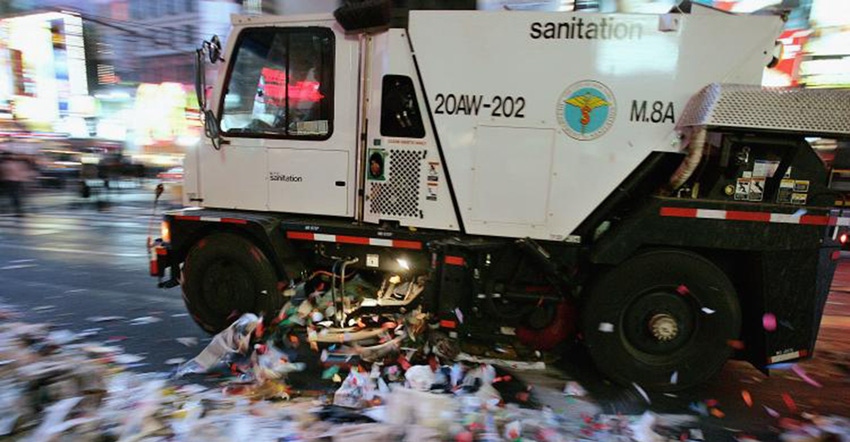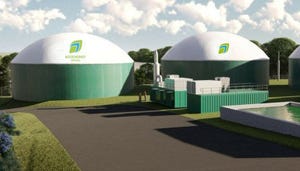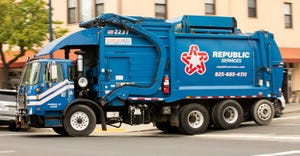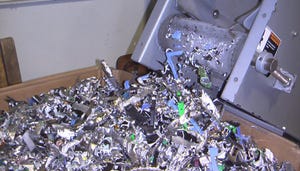New York Municipalities Share Plans for New Electrification Funds
New York State continues its decarbonization push, with the newest spring forward happening in the 40th district where eligible municipalities will get a piece of a $2.1 million grant for power and transportation electrification projects.

New York State continues its decarbonization push, with the newest spring forward happening in the 40th district where eligible municipalities will get a piece of a $2.1 million grant for power and transportation electrification projects.
The grant, available through the state Community Resiliency, Economic Sustainability, and Technology (CREST) program, follows approval of the state’s Climate Scoping Plan. The plan lays out a roadmap for New York to hit multiple targets it’s committed to, with some big ones being 70% renewable electricity by 2030; 100% zero-emission electricity by 2040; and net-zero greenhouse gas (GHG) emissions by 2050.
At a mid-August press conference New York State Senator Pete Harckham, joined by officials who will be on the funding receiving end, said, “When I got my allotment of CREST money, I said as chair of the Environmental Conservation Committee, I have to put my money where my mouth is.” He promised municipalities opportunity to tap into up to $100,000 each of the multimillion grant.
Electrifying the economy makes sense on multiple fronts he said, siting financial benefits, ways to address threats from record-high outdoor temperatures and fast-heating oceans, as well as public health risks; pointing close to home he called out Westchester County as a nonattainment zone for the Clean Air Act.
A number of jurisdictions had already begun along their electrification path and are thinking about how they will leverage the new funds to go a little further, floating ideas like charging stations for residents, electric vehicles (EV) for municipal fleets, and geothermal energy for their buildings.
“This grant came to us to do better in every municipality. Often, we have to compete, and [not having to do so] is a heavy lift. It’s wonderful that [the funding is] spread across municipalities,” said Ossining Mayor Rika Levin, adding that now communities will be able to have more significant, collective impact toward the approaching statewide goal to reach net zero-electricity emissions.
Ossining will put its share toward replacing gas- and diesel-powered lawn and park equipment with electric and is eyeing solar among renewables for municipal buildings.
“We are hearing a common theme. We all care deeply for our environment … and we’ve been spending a lot of time trying to investigate and build out [clean energy infrastructure],” said James Creighton, Cortlandt town councilman.
Cortlandt is aiming to add more EV chargers to its existing inventory and install solar in multiple municipal locations.
“There are a lot of reasons why [electrifying] makes sense. But the biggest is as a municipality we have goals beyond saving money and ensuring we are as green as possible,” Creighton said.
“We also need to show business owners in our community they should be doing the same thing. And this grant allows us to double down on our efforts and ensure a robust conversation is happening to be sure we are meeting the goals we’ve been asked to meet.”
Role modeling for businesses and communities was a recurring talking point among officials who shared their ideas for decarbonizing their jurisdictions.
“We all know and understand that we need to do our part, and in doing that we demonstrate for others that they need to do theirs as well,” said Mount Kisco Mayor Gina Picinich.
Mount Kisko has been actively seeking grants to build a network of charging stations and is wired for 20 dual-port stations, with plans to use the grant to build out the physical infrastructure.
North Salem was already set to install EV chargers in the fall of 2023 at its town hall, library, and at a commuter and business parking lot. New on the agenda is to invest in a geothermal heating system for the community center, said Warren Lucas, North Salem town supervisor.
Briarcliff Manor, which recently joined one of nearly 400 municipalities to become a Climate Smart community, is exploring several options.
“That includes [building out] our infrastructure and we’ve so far identified one building where the grant could help us save 30 to 40% in energy use a year,” said Rhea Mallett, trustee of Briarcliff Village.
Croton-on-Hudson, recently named the top clean energy community in New York State by the New York State Energy Research and Development Authority (NYSERDA), is working to advance solar, energy code updates, and clean municipal fleets.
“When you come to the Croton train station parking lot in a few months you will see the largest parking lot in the North Metro system with a solar canopy, not only generating enormous amounts of solar energy, but considerable revenue,” said Len Simon, Village of Croton-on-Hudson trustee.
Croton has aimed to add one EV vehicle a year to its fleet as well as charging infrastructure to support the expansion.
“We have chargers in a number of municipal lots and our solar array will include more than 12 new chargers as well. We’re a few steps closer on that long way to go,” Simon said.
The energy transition is taking municipalities down a new road and it’s not an easy one to navigate, some shared.
Bedford, beginning a million-dollar project entailing replacing gas-fired heating with heat pumps is now exploring geothermal. The funding will help with initial engineering work.
“But it’s complicated. It’s a new area so finding the resources to move these projects forward is intensive,” said Ellen Calves, Town of Bedford supervisor.
“We appreciate that by providing this opportunity, Senator Harckham understands both the challenges of municipal budgets and the urgent need to address the climate crisis.”
Other New York State climate initiatives include $4.2B available through the Environmental Bond Act to state agencies and local governments for community projects prioritizing adapting to climate change and creating green jobs.
Statewide electrification efforts include a $12M initiative to pump EV adoption and integration of those vehicles into the electric grid.
About the Author(s)
You May Also Like




